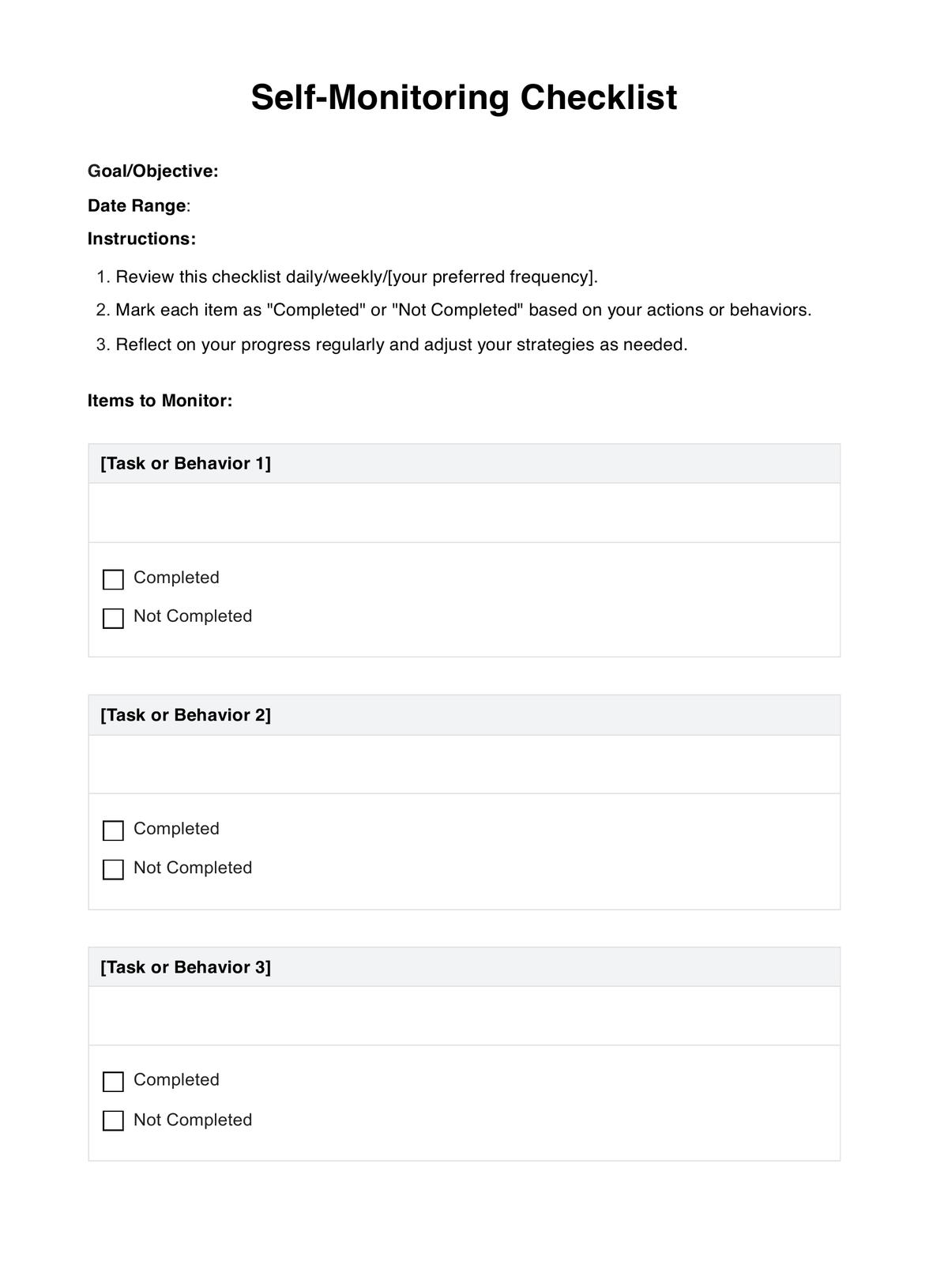Self Monitoring Checklists are used by individuals across various domains, including personal development, education, health, and project management.

Self-Monitoring Checklists
Discover the power of the Self-Monitoring Checklist. Learn how to use it effectively, its benefits, and why Carepatron is your go-to self-monitoring app.
Use Template
Self-Monitoring Checklists Template
Commonly asked questions
Users regularly review and update the checklist, marking tasks as completed or not completed to track their progress.
It helps individuals stay accountable, gain self-awareness, achieve their goals, manage their time effectively, stay motivated, and make data-driven decisions.
EHR and practice management software
Get started for free
*No credit card required
Free
$0/usd
Unlimited clients
Telehealth
1GB of storage
Client portal text
Automated billing and online payments











